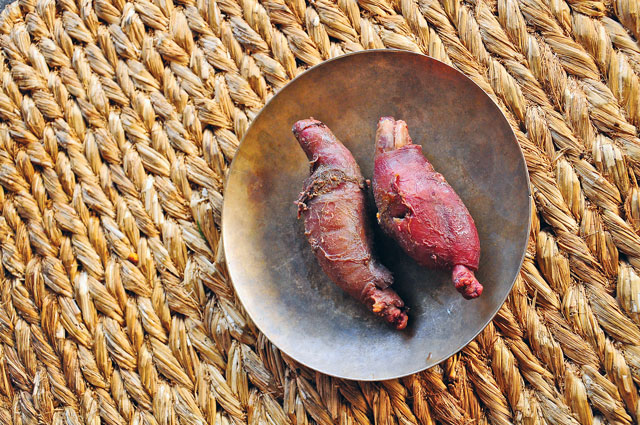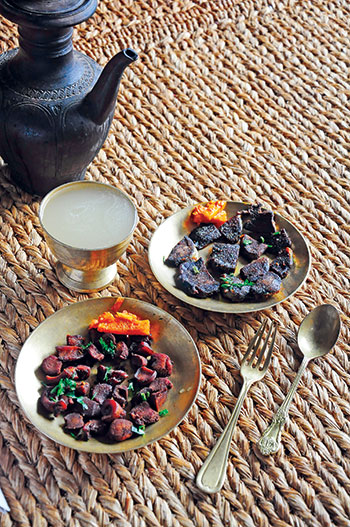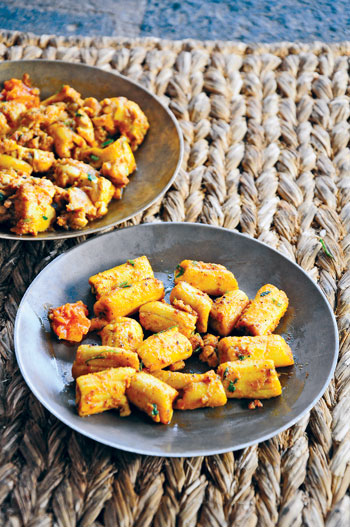‘Fear Factor’ has taken the sting out of the revulsion at eating repulsive stuff; even so, weird are the food that are part of some cultures, even in Nepal.
 Along with some bizarre traditions, Nepal also has a few mindboggling weird food items to offer. Weird food culture has always been an interesting, as well as quirky part, of every country, and not to be missed when you are traveling, so as to have new and memorable experiences. Associated with culture as well as taste, these weird foods are a must have on bucket lists, and one of the things you must try when you’re visiting Nepal.
Along with some bizarre traditions, Nepal also has a few mindboggling weird food items to offer. Weird food culture has always been an interesting, as well as quirky part, of every country, and not to be missed when you are traveling, so as to have new and memorable experiences. Associated with culture as well as taste, these weird foods are a must have on bucket lists, and one of the things you must try when you’re visiting Nepal.
Ghongi: One of the most common foods in the Tharu, Rajbansi, Santhal, Jangbad, and Bote communities of Nepal, ghonghi is often catered as a delicacy, just the way others serve chicken or mutton. Known as escargot in France, this snail species is served with ground linseed soup. Usually, eaten by sucking the snail from its shell, this dish is available all over the marketplaces of the Terai. Ghongis are captured alive from ponds and are placed in rice flour and water for one day; they take in all the rice flour and deposit all the soil inside them. Then, they are cooked in spices and gravy, and usually made into a soup. The look of the dish is rather unappealing, and although it might bear resemblance to the escargot, it is quite different in taste or method of eating. French culinary doesn’t require the snail to be sucked out of the shell, unlike ghongi. Be that as it may, it is a well-loved dish amongst the Tharu community.
 Blood drinking: Although this may sound rather creepy or primitive, the people of the Himalayan region, particularly in Mustang, participate in a blood drinking festival. First, to be clear, we’re talking yak blood here. Yaks are large, shaggy-haired animals related to cattle that live in the high altitudes of the Himalayas. Up there, yaks graze on herbs that villagers believe are good for digestion, but aren’t directly digestible by humans. Yak blood is believed to contain the herbs’ medicinal properties and other healthful benefits. And so, once or twice a year, villagers undertake an arduous trek up the hillsides to where the yaks roam. They set up camp for about a week, rustle up the yaks, carefully slit their neck veins, and cup the blood that pours forth, drinking it while it’s still hot. Then, they let the yaks go.
Blood drinking: Although this may sound rather creepy or primitive, the people of the Himalayan region, particularly in Mustang, participate in a blood drinking festival. First, to be clear, we’re talking yak blood here. Yaks are large, shaggy-haired animals related to cattle that live in the high altitudes of the Himalayas. Up there, yaks graze on herbs that villagers believe are good for digestion, but aren’t directly digestible by humans. Yak blood is believed to contain the herbs’ medicinal properties and other healthful benefits. And so, once or twice a year, villagers undertake an arduous trek up the hillsides to where the yaks roam. They set up camp for about a week, rustle up the yaks, carefully slit their neck veins, and cup the blood that pours forth, drinking it while it’s still hot. Then, they let the yaks go.
Pukala: A traditional dish made of a variety of boiled and fried meats of the water buffalo, it is a delicacy of Newar cuisine served during festivals and weddings. It is eaten between the main course and dessert. Pukala is made by boiling a variety of meats, like small intestine, liver, kidney, tripe, pancreas, and spleen. The meat is then sliced into one-inch pieces and pan fried. Food is an important element in Newari rituals, and specific food preparations are required for ceremonies and feasts. Pukala is a mandatory item during festivals. In some places, the dish is also served as an appetizer or snack in restaurants.
 Mice: There are many communities with various food cultures here, but the Tharu community unquestionably beats them all with its quirky and bizarre traditions. This community is the only one in Nepal that eats mice. It might be weird to acknowledge, but mice are a delicacy to them. They also choose what mice to eat; they don’t just dine on any mice they find, and there is no tradition of selling mice, like poultry. About 90% of the Tharus are farmers, and that is where the mice eating originates. There’s’ plenty of mice to be found in the fields, eating crops. These are captured, killed, and boiled into a stew. The Tharus have undoubtedly given meaning to the statement “revenge is a dish best served cold!”
Mice: There are many communities with various food cultures here, but the Tharu community unquestionably beats them all with its quirky and bizarre traditions. This community is the only one in Nepal that eats mice. It might be weird to acknowledge, but mice are a delicacy to them. They also choose what mice to eat; they don’t just dine on any mice they find, and there is no tradition of selling mice, like poultry. About 90% of the Tharus are farmers, and that is where the mice eating originates. There’s’ plenty of mice to be found in the fields, eating crops. These are captured, killed, and boiled into a stew. The Tharus have undoubtedly given meaning to the statement “revenge is a dish best served cold!”
Cow urine: This is perhaps the most common weird food culture here. Drinking cow urine is common in the Brahmin community, and otherwise, too. It is a religious tradition amongst Hindus. It is believed that only two things are pure in this universe: one is water of the holy Ganges River, while the other is urine of the holy cow. The cow whose urine is to be drink must not have delivered a calf. Also, the urine is to be collected just before sunrise. It is claimed that cow urine can cure many ailments. Also, that it is the only solution for treating baldness. As weird as drinking someone else’s pee may be, it is widely in demand at the moment. Cow shelters are benefitting from the sales, as people have begun to realize just how beneficial the urine is. No matter how bizarre the fact sounds, drinking cow urine is extremely popular from a religious as well as medicinal viewpoint.










